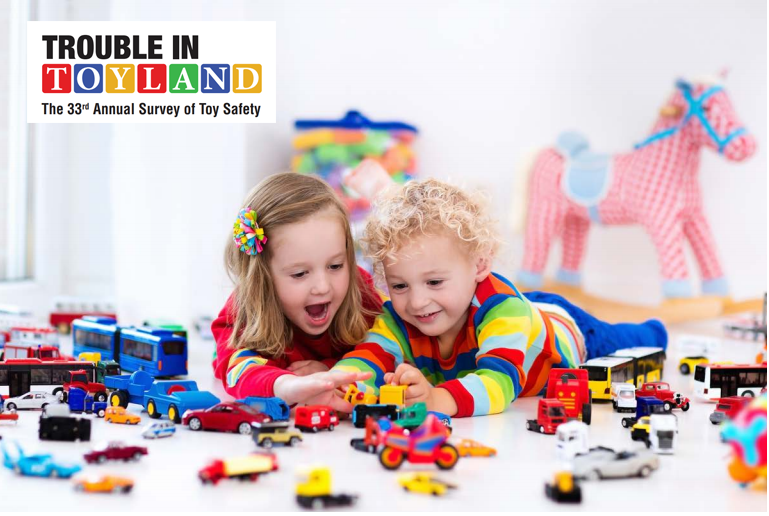This holiday season, watch out for dangerous and toxic toys. The Vermont Public Interest Research Group today released its 33rd annual Trouble in Toyland report. The report found toxic amounts of boron in “slime” products and a failure by Amazon to appropriately label choking hazards. Boron can cause nausea, vomiting and other health issues.
“No caregiver should ever have to wonder about whether or not the toy they buy is dangerous for their child. Toy manufacturers must do better to ensure that every child is safe,” said Samantha Hurt, Environmental Associate with VPIRG.
For more than 30 years, Trouble in Toyland has issued toy safety guidelines and has provided examples of toys currently on store shelves that pose potential safety hazards to small children. Key findings from this year’s report include:
- Hazardous Slime: A number of popular ‘slimes’ had toxic levels of boron, likely in the form of borax, up to fifteen times the European Union’s limit. According to the EPA, ingesting boron can cause nausea, vomiting, long-term reproductive health issues and can even be fatal.
- Missing Online Choking Warnings: In a survey of five search pages for balloons sold on Amazon, U.S. PIRG found no choking hazard labels on 87 percent of the latex balloons marketed to parents of children under 2, an apparent violation of the law. Among children’s products, balloons are the leading cause of suffocation death.
- Privacy-Invasive Smart Toys: The report also highlights two smart toys, a robot toy and a tablet, with privacy concerns discovered through an investigation by the Mozilla Foundation. Every year, the potential for smart toys to expose private data becomes a more significant concern.
“Regulators need to determine the appropriate health-based standards to protect children from boron in slime. In the meantime, we want parents to know the risks, so they can supervise their kids accordingly,” said Tano Toussaint, Consumer Watchdog Associate at U.S. PIRG.
While there are currently no limits on boron in children’s toys in the U.S., the advocacy organization called for placing warning labels on products and a full public hearing to determine safe levels of boron.
In addition to identifying dangerous toys already on store shelves, U.S. PIRG provides a guide on how parents, grandparents and other caretakers can ensure toys are safe and stay updated on recalled toys at www.ToySafetyTips.org.

